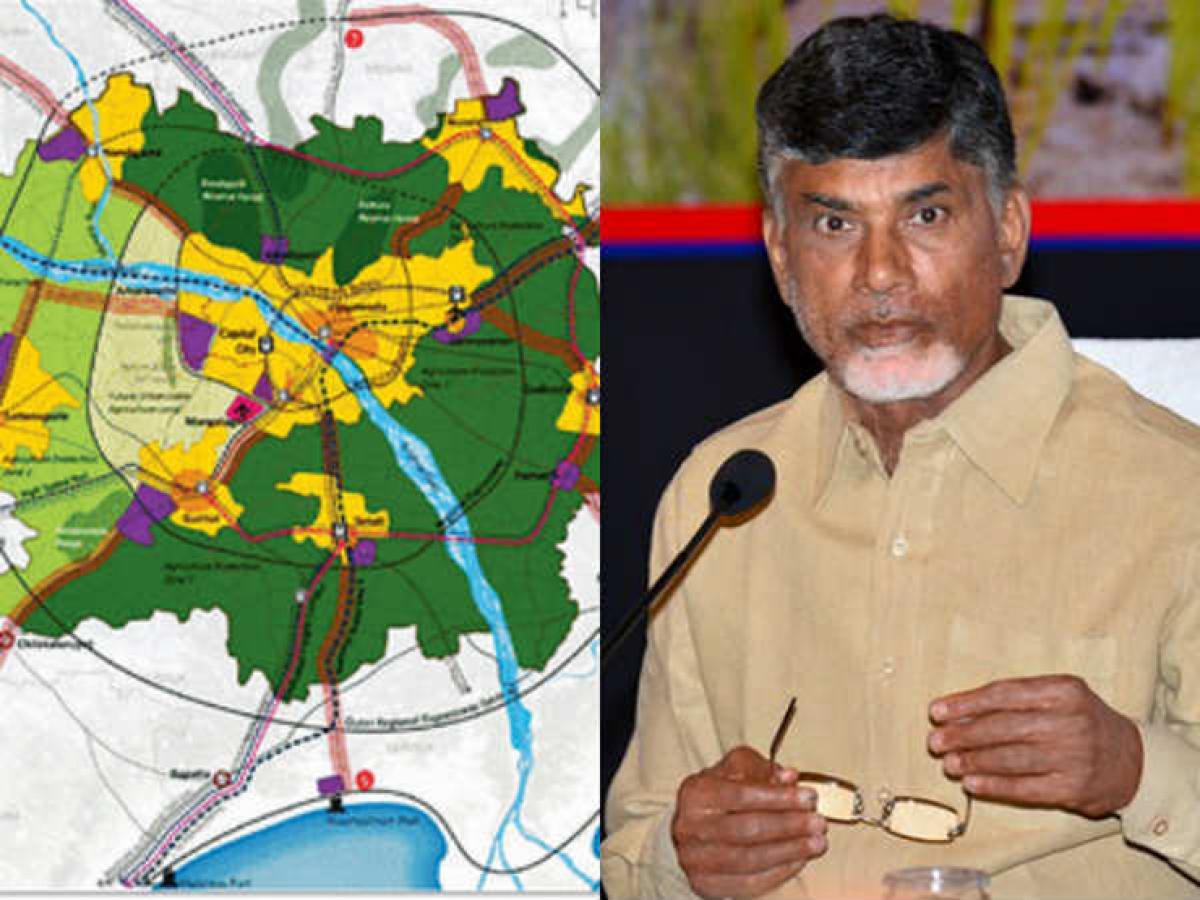'Amaravati’ capital ecologically challenged

The A.P. new capital christened as Amaravati, to be built in the vicinity of Vijayawada on Krishna river front is in the news for several reasons.A lot of discussion is taking place on political, economic, technical and environmental issues of the new capital.
The A.P. new capital christened as Amaravati, to be built in the vicinity of Vijayawada on Krishna river front is in the news for several reasons.A lot of discussion is taking place on political, economic, technical and environmental issues of the new capital.

Some PILs are also current on it in the courts of law. Of all, on ecological and environmental front, the concern is more acute. A PIL is also pending before National Green Tribunal.
The tribunal has taken an undertaking from govt. of A.P. not to make any alterations in the lands purported to have been given by the farmersto government for the purpose of seed capital of Amaravati till the next hearing.The hearing is scheduled on 27th of August, 2015, where in the government is allowed to file its counter.
The designated A.P.Capital Region,in VGTM area is a prime agricultural zone in the state and also in the country. It has some natural endowments and some manmade projects, which made the area one of the most productive areas from the point of agriculture.
The area has laid the foundation for the economic development of the area. Because of such lands the central coastal districts have become the most economically developed in the state. Now destroying such endowments, which were either natural to the area or made a century before,in the name of the capital, is felt as an inexcusable iniquitous act. The capital instead can be constructed in the denotified forest area available in the same zone without much ado. But, it is not happening so.We may now peruse some of the ecological and environmental issues connected to the enormous capital region development project.
Jareebu lads: The so called ‘jareebu lands’, part of the 33000 acres core area for the capital, are natural endowments to the area. They are soils of deposited river alluvium with ‘filter point’ irrigation facility i.e. shallow wells with inexhaustible water supply, with well drained soils, facilitating growing a wide range of crops --- vegetables, fruits, flowers and other commercial crops. They say they grow 3-5 short duration crops in an agricultural year and also highly remunerative perennial horticultural cropsthere.
They are far more productive than the famous double crop wetlands in the nearby Krishna delta. It is a unique ‘biome’ with a fascinating cropping pattern of about 80 to 100 types of crops. It is said that these lands fetch Rs 60000 to 80000 lease per acre/annum. Probably; these are among the most fertile soils in the country. We may build ‘Petronas’ towers anywhere, but we cannot create such ‘biome’, wherever we want. They are the natural endowment to the area and are heritage of the local people.
Krishna canal ayacut: In the Capital Region of 7240 sq.kms, vast stretches of Krishna canal ayacut lands, the so called Krishna delta, which are double crop paddy growing areas are going to be affected by the capital region infrastructure.
It is estimated that the extent of such lands could be about 2 lakh acres. The Krishna canal system is more than 150 years old built by SirArthur Cotton and was the spring board of the economic development of these areas. It is also not easy to recreate such an ayacut elsewhere now. Obliteration of such historical delta ayacut is considered a monumental waste.
Productive Agriculture lands: Besides, outside these jareebu and ayacut lands, all the cultivable area in the capital region is endowed with very fertile alluvial black soils, good rainfall, a high ground water table, facilitating a very profitable agriculture under bore wells. Unlike in Telangana and Rayalaseema regions,which suffer with low rainfall, very low ground water table with a very high cost and large scale failure of bore wells and are plagued by chronic droughts.
By and large the entire Capital region of 7240 sq.kms is a prime agricultural zone in the entire country apart from the unique jareebu and canal ayacut lands endemic to this area forming part of it.
Added to this, it is also reported that because of the deep alluvial and black cotton soilswithout hard strata and high water table the region is not suitable for high rise buildings. This area is also situated in Zone 3 of earthquake prone areas in the country and is also prone to frequent floods and cyclones. It is also said that to obviate the high water table and flood threat and some lands being lower than river flood level, it needs to raise some area by 6 meters adding to the cost immensely.
In addition to all this, a document prepared by United Nations Development Programme (UNDP) has identified that “Amaravati, the proposed capital of Andhra Pradesh, will face eight major environmental challenges that may affect the local atmosphere and lead to adverse climatic events in the region” ---- ‘New AP capital to pose major threat to ecosystem’ (TOI, 10 August, 2015). There cannot be any worse indictment than this.Atleast UNDP cannot be blamedto have any bias whatsoever against the Project.
In such a scenario which categorically forebodes, a grave ecological and environmental devastation, the need to go ahead with a mulish stubbornness towards such catastrophic capital adventure is beyond comprehension.Even if it is decided to have it in the vicinity only for the best reasons known to them, it can be built in that 43000 acres forest area or there about available in the area, shifting the constructions some 10-20 kms upwards with a limited area, avoiding many technical problems. Heavens will not fall because of it.
Even the capital scheme itself looks impossible.A.P.is one of the 29 states in India. It is not even a country, to model its capital on world class capitals of highly developed countries. Its DGP is around $80 B only. But It wants to imitate capitals like Singapore (DGP $360B), Tokyo (DGP $1617B) and Shanghai (DGP $594B) for its infrastructure.
It is preposterous and foolhardy. Even India’s capital New Delhi GDP is $294 B with a country’s GDP of $7300 B, and cannot compete with these cities in infrastructure. The state’s economy itself is in the doldrums presently. How can it pull off such dream capital even if it is that outlandish PPP model or FDI model?It is beyond the capacity of A.P. to service these gargantuan investments.
After all it is a city for the people and their distant future not to the vain glorious idiosyncrasies of some individuals for their short term gains. Just calling it a ‘people’s capital’ and planning for the disaster of them, cannot make it a peoples capital.
Political leaders in such situations should behave like statesmen taking everybody in to confidence.Follow the wiser counsel and take pragmatic decisions, not to jeopardize state’s economy and lives of people.Let us hope that the Courts will drill some sense in to their minds to stop this ecologically challenged gamble.
J R Janumpalli
Next Story


















